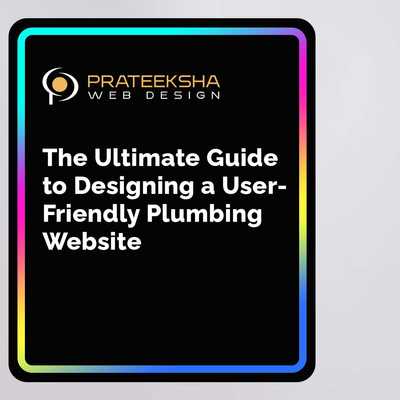When integrated into a website, images may be an effective communication tool. Choosing the correct image for your web design may help you make the right first impression, trigger emotions, and draw visitors' attention to your site. As a result, choosing the suitable image enables you to link your clients with your organisation. As a result, it is critical to select an image that is acceptable for the site's design. Any website would benefit from the addition of images. They serve to break up the text on your website and give visitors a visual example of what you're talking about.These photographs provide a fantastic opportunity for your company to engage with its target market.If you solely use photos to fill in the gaps, you won't be able to attract as many visitors as you should. Your website will be ignored by a large number of users. This, on the other hand, should not be a reason for alarm.Curating different photos and using them for web design has never been easier. But do you know how to turn them into effective communication tools that complement the look and feel of your website?
Here are some pointers on how to use photos in web design.
Locate the ideal hero image
With monitors becoming crisper and higher resolution, and broadband speeds increasing, the impact of a spectacular large-format hero image at the centre of a landing page cannot be understated. The selection of this critical asset is critical, since it has the potential to establish or destroy a user's emotional connection with a brand. Wherever feasible, ensure that it is directly related to the subject at hand. If you lack the time or funds to art direct something original, have no fear — quality stock artwork might really be ideal for this purpose, assuming the brief is appropriate.
Restrict the use of large images above the fold
While images are beneficial for a variety of reasons, caution should be exercised in setting their priority too high. Above the fold, or the portion of a web page that visitors can see without scrolling, is the most valuable real estate on your site. Not because people are unwilling to scroll, but because this section is the first thing visitors see when they arrive on your site, and you should make the most of it. Give visitors a cause to scroll and explore the remainder of your site. If your photographs play a significant role in this instruction, you can make them as large as you like. Ensure, however, that they do not push more vital, useful, or engaging information below the fold.
Utilize meaningful visuals
It is critical to understand why you are employing images. Don't use them solely to eliminate excess white space or because you've heard they're popular. You should be able to satisfactorily respond to two questions on each image on your site.Why did you choose that image over another? Why did you choose that location for the shot rather than another? If you are unsure about the answer to either of these two questions, you should pause for a while to consider it. Bear in mind that you should only utilise photos that contribute to your content in some way. Whether they demonstrate pertinent information, demonstrate a point you make elsewhere, or communicate an emotion that supports your message.
Label Images That Are Clickable
Using graphics instead of text for links has become fashionable. In general, this is a good thing because images have a greater potential for attracting attention and are typically larger, making them easier to click. However, you must remember to label them. While effective text links are self-explanatory, many images are not and require labelling to indicate where they link to.
Ascertain That Your Site Does Not Slow Down Due to Images
Images can have a significant impact on how a user interacts with a website. Simultaneously, they can cause a site to slow down, negating any favourable experience. Fortunately, modern Internet connections enable us to quickly load a large number of photographs – whether we are at home, in our workplace, or in a café with high-speed Internet. However, if visitors to your website are using a mobile device or a connection that does not currently satisfy our standard requirements, it is critical that you optimise your photographs. You can optimise their size, for example, or utilise thumbnail pictures to sample larger photographs.
Pursue Original Images
Images should be distinctive. Customers will be familiar with each image they view on numerous websites. They will become aware of stock photography if they come across them on your website. While stock photographs can be utilised on a website, they do not deliver the intended message to the consumers. Using a stock photo might be more effective but would be slightly more expensive. However, to get a holistic sense when selecting photographs for site design, it is advisable to use a professional photographer who can assist you in acquiring images that are most appropriate for your business and its products or services.
Consider Images With Varying Crop Sizes And Ratios
When the appropriate image is placed for site design, it should be cropped. Cropping an image is a design skill. Cropping should be done with care to preserve the image's originality and clarity. Additionally, the use of graphics in site design should capture the user's attention. A fully responsive website can be rendered ineffective if the images are not designed and positioned appropriately, or if they do not conform to the precise screen formats and aspect ratios.
Utilize Appropriate File Types
An image can be stored in a variety of file types, each of which serves a distinct purpose. You should select the appropriate file that meets your requirements and also matches the displayed material. The following file types are particularly well-suited for use on a website: JPEG Format — This format is optimal for images with a high number of colours, shading, and gradients. PNG Format — This format is ideal for displaying a logo on a web page. Additionally, it can be employed when an image contains a large number of solid colours and involves transparency. GIF Format — This format is best used when an animation is present. Make-Use-Of-The-Right-File-Types Utilize-The-Correct-File-Types (Image Source: Color Experts International) When the appropriate image is shown with your web page's content, it provides excellent support. Numerous organisations utilise image optimization to ensure that their website is visually appealing.
Maintain A Consistent Image Style And Dimensions
When all photos in a web design are the same size and style, the result is stunning. Additionally, it aids in the organisation of columns, text, and other information presented on a web page. For instance, the photographs and their associated material are presented cleanly and are also easily accessible. This would result in a tidy appearance for a web page. It would significantly improve the user experience. Because the photographs are all the same size and positioned correctly, they fit in a single column.
Utilize Images For User Interface Elements And Icons.
Stock vector images can be a wonderful source of UI components and icons for app and website design, especially if they are tweaked and customised in Adobe Illustrator to match the site's look and feel. While using stock photos is all about aiming for uniqueness and relevancy to the brand for which you're building — and avoiding cliches - icons are the polar opposite. You can exploit built-in visual associations with specific symbols to ensure a consistent user experience. If the icon's role is readily apparent, you may keep the UI clean and simple without using text labels. These are referred to as universal icons and include a house for the 'home' button, a magnifying glass for searching, and a shopping cart, among others. Unfortunately, there are relatively few universal icons. Certain well-known images, such as the frequently used heart and star symbols, have contradictory interpretations depending on the context, and are hence referred to as conflicting icons. Select carefully and add text labels where appropriate for a more seamless user experience.
Include File Names for Images to Assist SEO in Ranking Higher
Ascertain that the file names for your website's design images are appropriate for SEO purposes. Before uploading a file to a website, double-check the file name and then upload it. This is because image management becomes easier. It would boost the SEO ranking. Consistency requires the usage of lowercase alphabets and numerals. Avoid using punctuation or spaces in the file name of the image.
Ascertain That Captions And Alternative Text Are Appropriately Placed
Once you've uploaded the image to your web page, double-check that all necessary information, such as captions and alt text, is included. As with the file name, this information benefits SEO. Though alternative text, often known as Alt tags, is not visible to the viewer, it provides information to a search engine about the image. As a result, the alternative text for each image should be filled in once the photos are posted to the web page. The alternative text should include a term that describes the image.
Verify the image's licence
If you are using photographs from the internet or other sources, you must also verify their copyright status. If it is not intended to be shared, you may not use it on your website since it may violate the law. As a result, you must capture photographs that are suitable for sharing or, to be on the safe side, it is always advisable to hire a professional photographer to photograph your products. In this manner, you retain ownership of the image. As a result, it is incapable of being copied.



